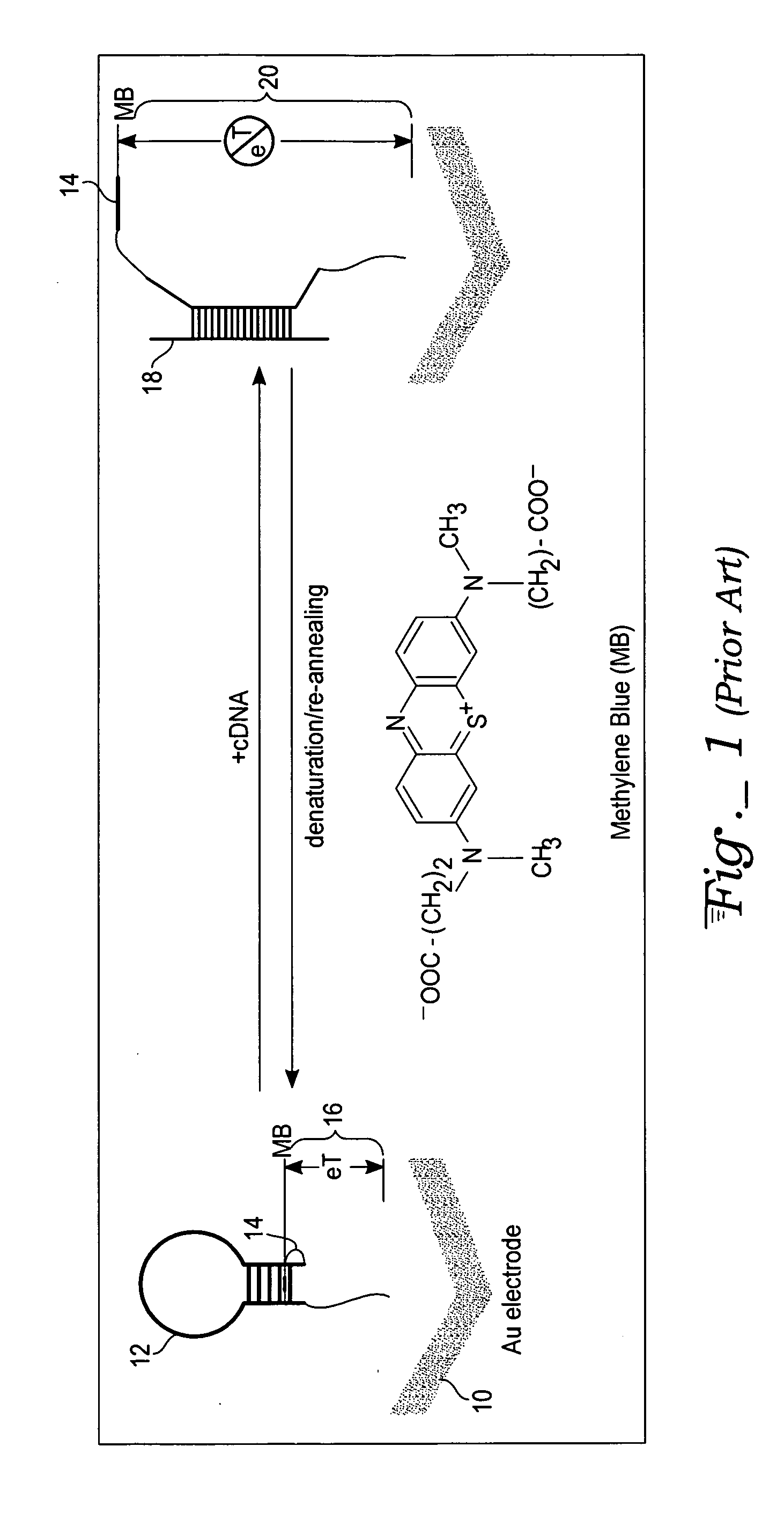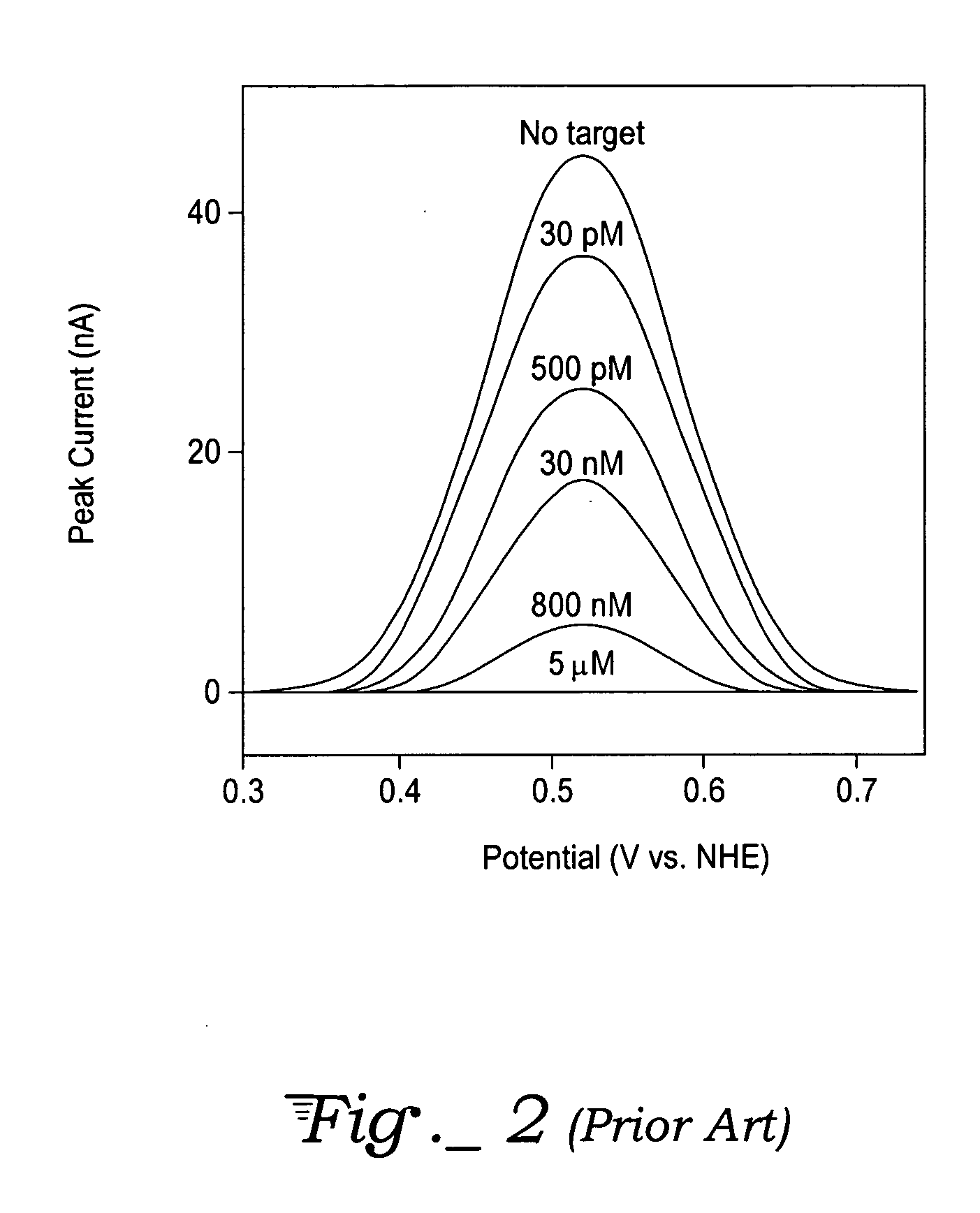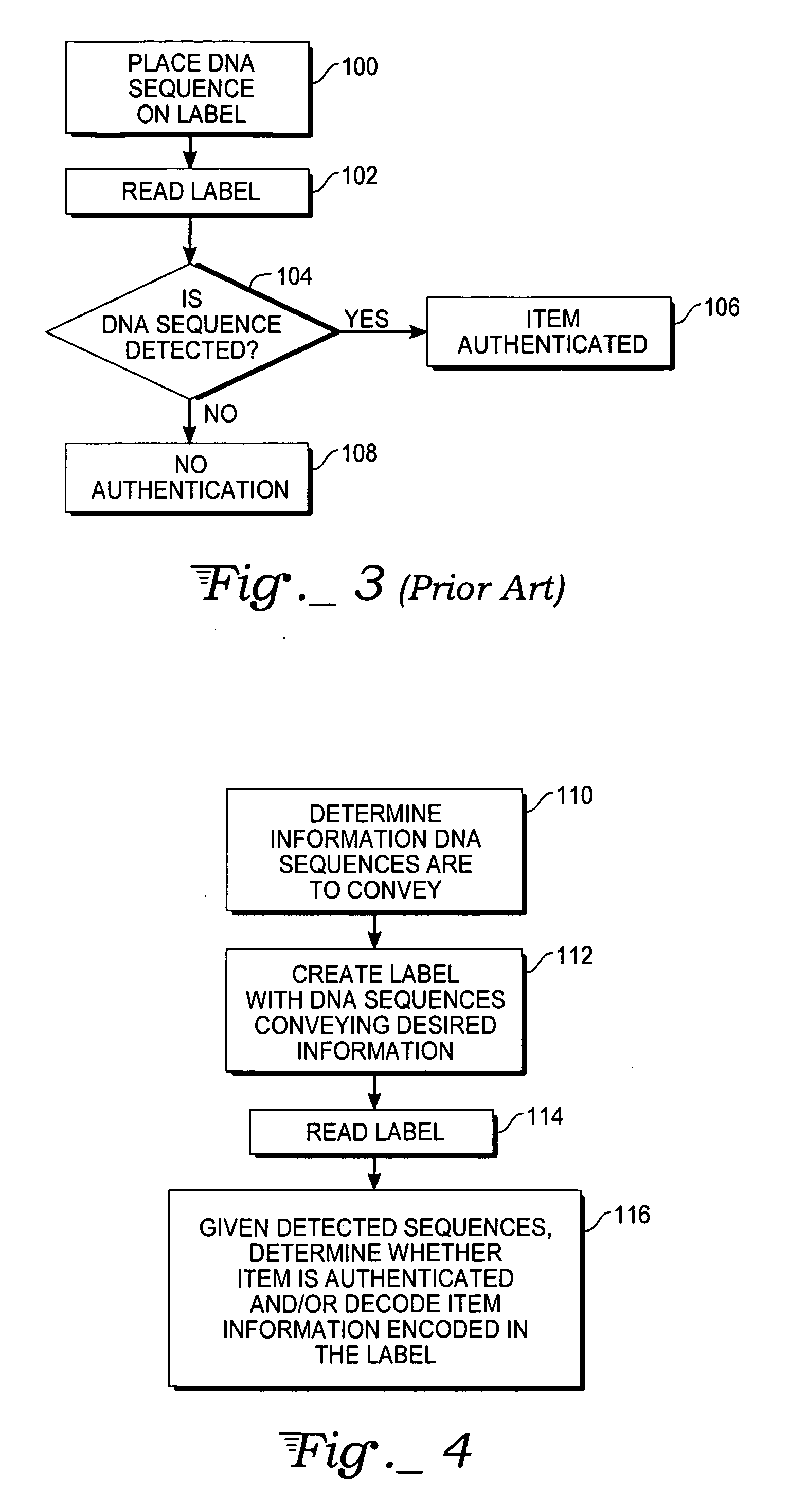Method, apparatus, and system for authentication using labels containing nucleotide sequences
a nucleotide sequence and label technology, applied in the field of authentication of items, can solve problems such as compromising the security of such labels
- Summary
- Abstract
- Description
- Claims
- Application Information
AI Technical Summary
Benefits of technology
Problems solved by technology
Method used
Image
Examples
Embodiment Construction
[0025] The following definitions for these terms are used throughout the application (unless otherwise noted):
[0026] DNA tag—a mix of oligonucleotides that provides a unique signal when appropriately interrogated.
[0027] DNA label—a self-contained authentication label using a DNA tag. The label may be associated with an item to be labeled, but is distinct from the item (though the label may be applied to the item). A label may be created, for instance, by placing the DNA tag on a surface (such as paper, plastic, or any appropriate substrate) which is then affixed to an item, placing the DNA tag directly on a surface of the item, or mixing the DNA tag in a liquid, or otherwise including the tag in the item. Labels may also be added to various media, including liquids, powders, solids, gels, gases, etc. They may be applied to any external surface or any internal surface of an item to be analyzed.
[0028] DNA reader—a device for interrogating a DNA label to determine its signal and mak...
PUM
| Property | Measurement | Unit |
|---|---|---|
| Frequency | aaaaa | aaaaa |
Abstract
Description
Claims
Application Information
 Login to View More
Login to View More - R&D
- Intellectual Property
- Life Sciences
- Materials
- Tech Scout
- Unparalleled Data Quality
- Higher Quality Content
- 60% Fewer Hallucinations
Browse by: Latest US Patents, China's latest patents, Technical Efficacy Thesaurus, Application Domain, Technology Topic, Popular Technical Reports.
© 2025 PatSnap. All rights reserved.Legal|Privacy policy|Modern Slavery Act Transparency Statement|Sitemap|About US| Contact US: help@patsnap.com



